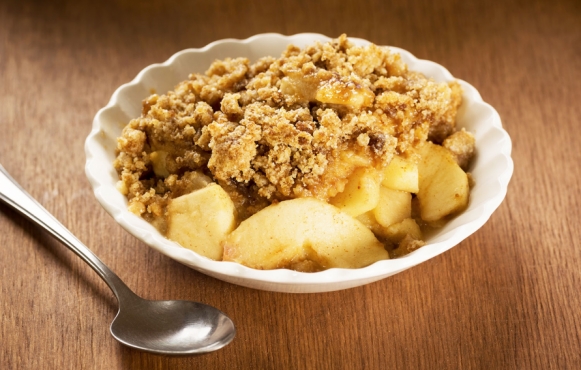Apple Pie

It's apple season, which means it's apple pie season! Grab a bushel and let's get baking.
There’s nothing more American than apple pie (and colonialism). Apple pies began popping up regularly in extant recipes circa 1381, and it’s likely that Chaucer and his medieval compatriots dined on them frequently. Back then, the typical apple pie also included pears, figs, raisins and saffron.
Dessert apples didn’t even make their way to America until British, Dutch and Swedish colonialists brought over seeds from Europe and planted them here—and then waited years for the trees to grow and bear fruit. Prior to that, Native Americans and Europeans had only crabapples, which yield comparatively small and sour fruit.
By the 19th century, apple pie had gone through a culinary evolution and become synonymous with American prosperity and pride. During World War II, when reporters asked young soldiers why they were going to war, many repeated the catchphrase “for Mom and apple pie.”
While debates rage over the preparation (from-scratch crust? With butter? Lard? Shortening? What about a crumble topping?) and the manner in which it is served (à la mode? With cheddar? Whipped cream? Warm? Cold?), most of us can agree on some basics. Apple pie should have a tender but crisp crust; the filling should be neither too runny nor too gummy; it should be sweet but balanced with a bracing dash of acidity either from the apples themselves or a squirt of lemon juice. Cinnamon and nutmeg should be detectable, but just.
We all have our tried-and-true apple pie recipes and sometimes balk at the notion of fixing what ain’t broke. But we couldn’t resist these two recipes and have incorporated them into our pie-making repertoire. A crumble hails from Goold Orchards, a wonderful 100-plus-acre family farm in Castleton that dates back to 1910. And a classic—with a shortcut!—apple pie recipe comes from Healthy Living Market & Café’s wonderful from-scratch bakery counter.






